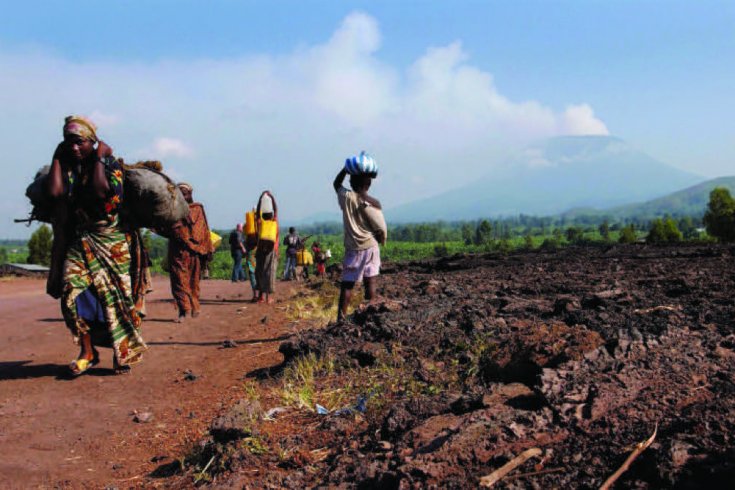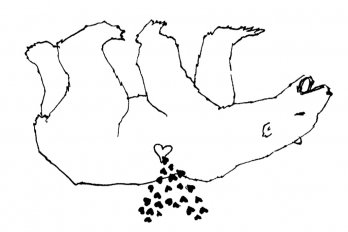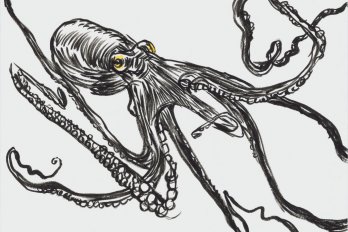
Goma—“This is the most bizarre country in the world,” says Gabriel the taxi-man in angry rapid-fire French as peacekeepers wave his battered Corolla past a roadblock. Gabriel, a former physics student, has been nervous since departing this same checkpoint an hour ago. Now that we’re back in UN-secured territory, his anxiety has turned to rage. “We have so much. Diamonds, gold, oil. But we are the poorest country. Because of thieves and bad leaders.”
Gabriel falls silent. He doesn’t need to say that they are often one and the same. Ahead of us, the road to Goma runs alongside a sinuous black river of hardened lava. More than half a million people live in this city, but for how much longer is anyone’s guess. Caught between the threats posed by Lake Kivu and a live volcano, near the war-torn Democratic Republic of Congo’s border with once-genocidal Rwanda, Goma is facing a catastrophe of potentially Biblical proportions at a time when years of violence and collapsed governments have left the city ill-equipped to handle anything more than simple survival.
The eastern DRC is one of the last lawless territories on earth. No roads run to this enormous region, which is bigger than France, from the country’s nominal capital, Kinshasa. The post office hasn’t been staffed for a decade and the currency is cash US dollars. The region is a crazy-quilt patchwork of shifting territories inhabited by more factions than you can shake a Kalashnikov at: troops from the DRC, Rwanda, Chad, Zimbabwe, Angola, Namibia, and Sudan; rebel forces connected to Rwanda, Zimbabwe, Angola, Namibia, Sudan, Burundi, and Uganda; independent warlords. Seventeen thousand UN troops struggle to keep an uneasy, regularly broken peace.
Goma itself doesn’t look doomed. The city is set amid one of Africa’s prettiest landscapes, perched on a gorgeous tropical lakefront in the shadow of green-clad volcanoes that shelter some of the world’s last gorillas. But one of these volcanoes is Goma’s very own Mount Doom: Nyiragongo, eighteen kilometres to the north. Its looming, flat-topped darkness, from which an ever-present plume of smoke drifts, towers over the city. On a clear night, its murky red glow can be seen for miles.
In January 2002, Nyiragongo blew its top. Torrents of molten lava flowed through the city into Lake Kivu. More than a hundred people died. A quarter of a million fled. Goma’s cathedral took the full brunt of the flow; only its walls remain, topped by an ashen cross. Today, a huge cataract of hardened black lava divides the city, dotted by the jumbled, rusted carcasses of cars and a few burnt skeletons of buildings.
The Congolese responded to the eruption with either indomitable tenacity or bewildering optimism, depending on your point of view. Much of the lava that “cooled and lay like twisted dragon-shapes,” as Tolkien put it, has now been put to use. Heaps of lava gravel and orderly piles of watermelon-sized stones wait to be mortared into huge walls that will surround newly built properties on the newly vacant real estate and, with luck, divert any future rivers of red. Children in blue-and-white uniforms play on an enormous jagged field of dark lava just outside the city’s largest school. The streets seethe with noise, chaos, colour, commerce—Congolese are far more exuberant, in both attitude and dress, than the reserved Rwandans.
The city is very much alive, but every inhabitant could be killed in the space of a few minutes. And not likely, as one might expect, by sectarian violence or Mount Nyiragongo. By Lake Kivu itself.
In 1972, Professor Robert Hecky of the University of Waterloo analyzed sediment samples from Lake Kivu, which is a seventh the size of Lake Ontario and deeper than Superior. He found that for the last five millennia, something has triggered massive local extinctions roughly every thousand years in and around Lake Kivu, sweeping vast amounts of vegetation into the lake.
One possible culprit is carbon dioxide (CO2), which bubbles up ceaselessly in volcanically active lakes such as Kivu. If CO2-rich water—also known as soda water—is disturbed by a sufficiently violent trigger, all the gas erupts at once. Shake and open a can of club soda and you’ll get the idea.
In 1986 in Cameroon, almost 2,000 kilometres to the northwest, the eruption of a volcanic-crater lake, Nyos, spewed 1.2 cubic kilometres of CO2 into the atmosphere. This dispersion, known as a limnic eruption, suffocated 1,700 people to death and triggered an eighty-metre-high wave. Lake Kivu is 1,800 times bigger than Nyos. There is enough CO2 dissolved in Kivu’s waters to cover the entire lake to a depth of 100 metres. When combined with the methane that also lies beneath Kivu’s surface, this could prove extremely dangerous. According to a team of European researchers led by Dr. Martin Schmid, water samples from Kivu’s depths “sparkle vigorously like uncorked champagne.”
Schmid’s team, which has been studying the lake since 2002, has determined that Nyiragongo is unlikely to trigger a major CO2-and-methane upsurge, but that a volcanic eruption beneath Lake Kivu could do so. Their observations (pieced together from two different sources) are alarming: “New fractures toward the lake opened during the last eruption—“tectonic activity has been unusually high during the past few years—“volcanic cones indicate that magma eruptions have happened at the lake floor in the past—“a gas release from Lake Kivu could cause an unimaginable disaster.” More than two million people live near Lake Kivu today; history suggests that a limnic eruption could kill them all.
The natural disasters threatening Goma are perhaps avoidable. On a bluff above Goma’s downtown, an internationally funded volcanological observatory maintains a flotilla of sensors directed at Nyiragongo and Lake Kivu. Any advance warning of an eruption will be last-minute, however. According to Professor Dario Tedesco of the University of Naples, a former UN consultant, “I am afraid it is a matter of days, or probably of hours.” But it should still save lives.
Lake Kivu could be defanged if massive pipes were installed to vent excess gases. The many millions the project would cost could even be paid for by the lake itself if the fifty-five cubic kilometres of methane dissolved within—more than ten times the amount used annually by the DRC and Rwanda—were to be sold.
Such a plan, however, would require organization, stability, investment. None of that can be found in Goma. While the volcano churns and the lake seethes, warlords still battle UN peacekeepers and smugglers, and politicians continue to loot the country’s enormous natural wealth. If and when natural disaster erases Goma from the map, today’s human disaster will be to blame.
On the road back to the city, Gabriel and I pass the lava-shortened airfield where creaking Russian airplanes land and take off at all hours carrying mining prospectors and smuggler barons. The city’s residents, meanwhile, are stuck buying their gasoline from roadside gangs because all the gas stations were immolated in 2002. During power failures, which last for days or even weeks, they must trudge to Lake Kivu to collect water by hand. “I become so angry,” Gabriel says, “that I feel like I myself am the volcano.”




